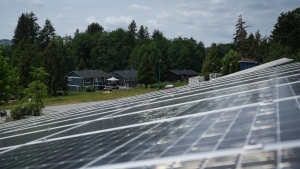BC Hydro, the primary electric utility in British Columbia, is taking steps to increase its clean power sources in order to meet the province’s demand for clean energy.
According to a recent report, BC Hydro has set a target to generate 93% of its electricity from clean sources by 2025. This is in line with the province’s CleanBC plan, which aims to reduce greenhouse gas emissions and transition to a low-carbon economy.
In order to achieve this goal, BC Hydro is looking to add more renewable energy sources to its portfolio. This includes expanding its hydroelectric facilities, investing in wind and solar power, and exploring new technologies such as geothermal and tidal energy.
BC Hydro’s CEO, Chris O’Riley, emphasized the importance of this transition, stating that “clean energy is the future and we are committed to playing our part in reducing our carbon footprint.”
The utility is also working towards increasing energy efficiency and conservation measures to reduce the overall demand for electricity. This includes offering incentives for customers to switch to energy-efficient appliances and implementing demand-side management programs.
However, BC Hydro acknowledges that this transition will come at a cost. The utility estimates that it will need to invest approximately $2.5 billion over the next five years to meet its clean energy targets. This could potentially lead to an increase in electricity rates for customers.
Despite the financial implications, BC Hydro remains committed to its clean energy goals and believes that the long-term benefits will outweigh the initial costs.
In addition to reducing greenhouse gas emissions, the shift towards clean energy will also create new job opportunities and support the growth of the clean energy sector in British Columbia.
BC Hydro’s efforts to increase its clean power sources align with the province’s commitment to combat climate change and build a sustainable future. As the primary electric utility in British Columbia, BC Hydro plays a crucial role in achieving these goals and is taking proactive steps to meet the demand for clean energy.



